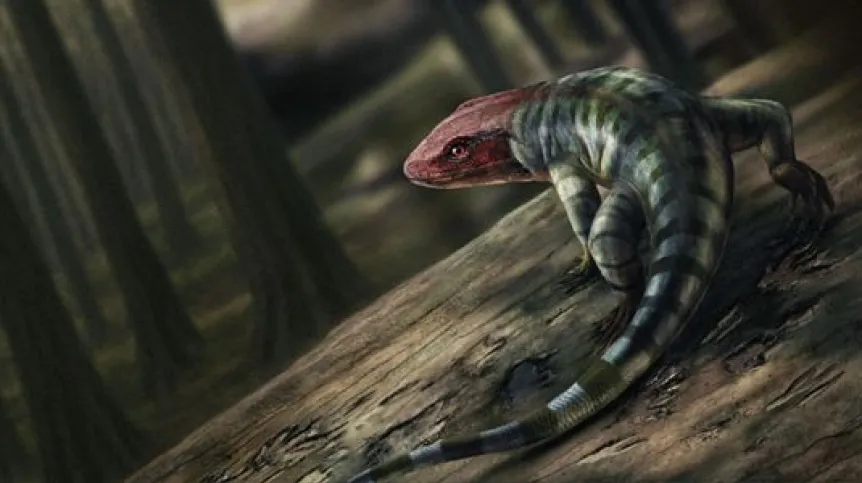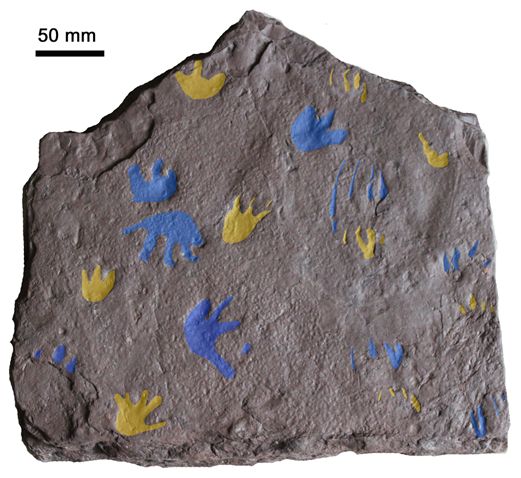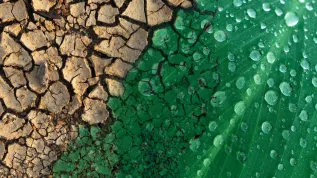
Traces of the oldest reptile have been found in Australia. They come from the early Carboniferous and are 350 million years old. This means that the evolution of reptiles began at least 20-30 million years earlier and in a different part of the world than indicated by previous finds, shows a publication in Nature, co-authored by a Polish researcher.
It seemed that we already knew a lot about the emergence of animals onto land and the evolution of vertebrates. Meanwhile, only now has the only known trace from the early Carboniferous documenting life on Gondwana (the protocontinent that would later split into South America, Australia, Africa, and Antarctica) been described. This trace shows that the first reptiles lived in the southern hemisphere 20-30 million years earlier than in the northern hemisphere. Consequently, the divergence in the evolution of amphibians and reptiles took place earlier than previously thought. The publication in Nature shows how large the terra incognita still is.
The cold months have finally arrived in Australia, when snakes, spiders and scorpions take refuge in their hiding places, and the risk of a venomous bite while wandering through the wilderness is lower. Two local adventurers, minerals and fossil seekers, set off on a trek through normally inaccessible areas near the Australian Snowy Plain. The men combed through privately owned areas of dried-up rivers and searched for fossilized scales of ancient fish. The owners of these areas are often reluctant to invite seekers. Some uninvited guests would receive a bag of venomous snakes as a thank you for their visit. However, the men knew how to act. During one of their hikes, they came across an interesting piece of sandstone with visible imprints of the paws of a prehistoric creature. The collectors had a hunch that it was something interesting: they took the piece of rock measuring 30 cm x 40 cm with them and asked a palaeontologist friend to help determine what it was. They are now describing this piece of rock in one of the most important scientific journals in the world - Nature.
Co-author of the study, Grzegorz Niedźwiedzki, PhD, from the University of Uppsala in Sweden and the Polish Geological Institute-National Research Institute, explains in an interview with PAP that the rock shows imprints of the front and back paws of an animal that moved quite agilely on land on narrowly spaced limbs. There are no traces of a dragged belly or tail on the stone. The creature could have been about 30-50 cm long, the size of a large lizard. The fact that this animal was no longer an amphibian is evidenced by the presence of keratin claws and elongated fingers characteristic of reptiles. The fossilized traces are dated to 350 million years ago, i.e. the early Carboniferous. It seemed that these were not the times of reptiles yet.

After meticulous research, it turned out that this is the oldest trace in the world left by an amniote. Amniotes are a group of animals that include reptiles, birds, and mammals, but not amphibians. During the development of their embryos, foetal membranes appear, which allows the young to develop without the aquatic environment - in this case - the animals can lay eggs on land. The find from Australia is therefore the oldest document of the existence of an animal that was no longer an amphibian, so it can be called the oldest known reptile to date. Reptiles emerged from a slightly different evolutionary branch than mammals, so some ancient amniotes were neither reptiles nor proto-mammals.
It turns out that the oldest known reptile could have lived in what is now Australia. Until now, such organisms have been found in the Northern Hemisphere, e.g. in Canada. And they have been dated to 320 million years ago. The new find shifts the chronology of reptile evolution back at least 20 million years.
The reptile has not yet been given a species name, scientists want to give it a name only after fossilized bones are found.
'We must be open to such breakthroughs. Thanks to science, we are gaining an increasingly accurate picture of the world, but we must be prepared that this picture will change thanks to subsequent discoveries. We have not finished putting together all the puzzle pieces. We only have a few of them! We need research conducted in different corners of the world so that we can obtain an increasingly complete picture of what life once looked like and how it evolved', Niedźwiedzki concludes.
PAP - Science in Poland, Ludwika Tomala (PAP)
lt/ agt/













